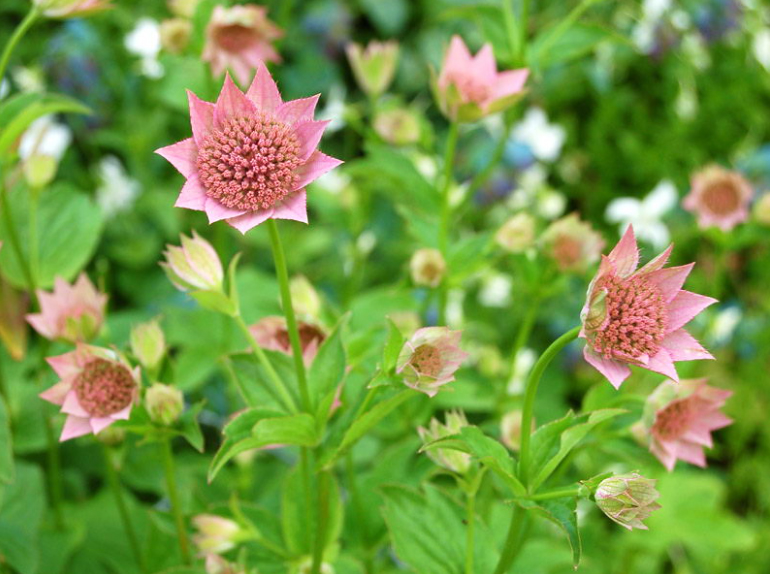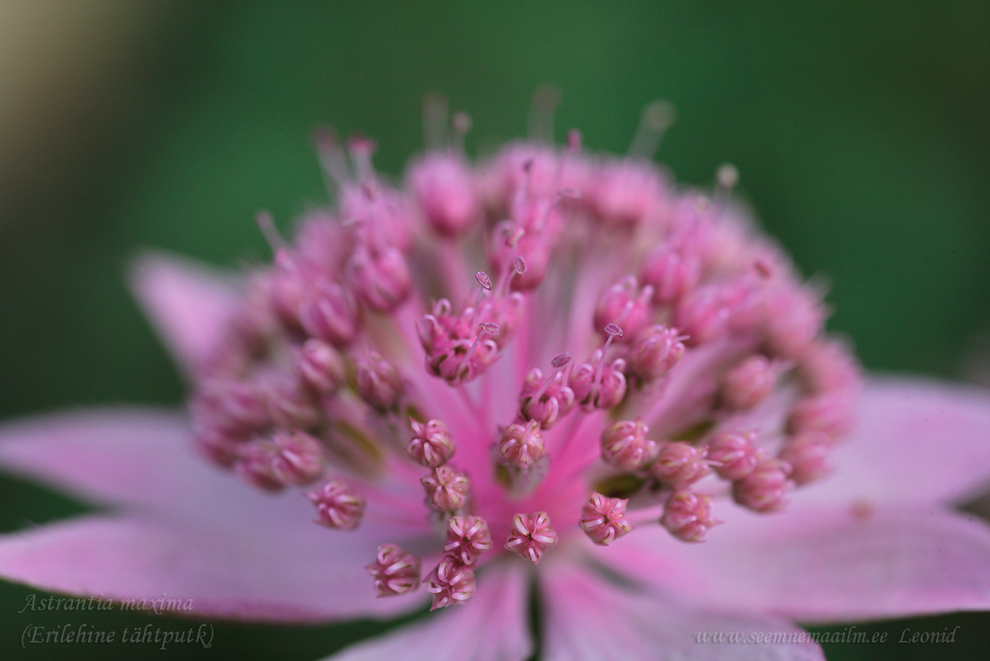An amazing plant from the Apiaceae family, creating an unusual feeling of lightness and airiness.
Homeland - the Caucasus. Very decorative long-rhizome compact plant about 40-60 cm high with tripartite leaves. The flowers are small, pink, collected in simple umbrellas up to 4.5 cm in diameter.
The involucral leaves of the flower are membranous, slightly reddish, about 1 cm long. Vegetates from April to October. Blooms in June and blooms for about 2 months. Seeds ripen in August.
The plant is drought-resistant, with a powerful branched root system. Loves light, but tolerates partial shade. It is frost-resistant, but it is better to cover young plants with spruce branches.
He does not like transplantation, he can grow for a very long time in one place.
Very easy to propagate by seeds before winter. When sowing in the spring, stratification is needed within 2-3 months. Adult bushes are divided in spring or autumn.
Flowers for cutting.
Flowering Period: Juni-Juli.
Winter Hardiness Zones: Z5-Z7.
1.0 g = 240 seeds.

* Cold-germinators are still referred to as frost-germinators, although this is not quit correct. The sowing must be kept warm (about +18+22 °C) and moist for the first 2-4 weeks. After this period the sowing must be kept a cold temperature (between -4 and +4 °C) for another 4-6 weeks. It is not so important if the temperature is higher or lower during the cooling period, but the cooling period has to be prolonged because the synthesis of the germination inducer, hormon-like acid, slows down or comes to a standstill.
It is beneficial to cover the sowing with snow during the cooling-period. The temperature below it usually keeps in the optimum range of -4 °C to 0 °C. The sowing is kept moist , and the melting snow helps to destroy the shell, which is advantageous for the germinating seedling. After this cooling-period the sowing may not be immediately exposed to high temperatures. The most effective temperatures are between +5 to +12 °C, even if germination has started. The best location for this sowing, even in March, April and May, is the open field, the cold frame or a cold greenhouse.
This amazing and neat perennial comes from the Caucasus, 40-60 cm high with inflorescences 4.5 cm in diameter. The plant has a long rhizome.
The color of the inflorescences is pink, and the wrapper is slightly reddish.
The filmy leaves reach a length of 1 cm. The flowering period is from July to September. The seeds ripen in August.
This plant feels best in open areas, but can also grow under trees if the shade is not very dense.
The plant is drought-resistant, with a powerful branched root system. It loves light, but can also tolerate partial shade. Frost-resistant, but it is better to cover young plants with spruce branches.
It does not like transplanting, in a permanent place it can grow for a very long time (up to 10 years).
It is very easy to propagate by sowing seeds before winter. When sowing in spring, stratification is required for 2-3 months. Mature bushes are divided in spring or autumn.

Largest Masterwort. Bot. syn.: Astrantia helleborifolia.
For successful cultivation of Astrantia, the main thing is that the soil is moderately moist throughout the season. This means: if the soil on the site is clayey and moisture-intensive, then astrantia can be planted in the sun, and if, on the contrary, it is porous and easily gives off moisture, then the best place for astrantia will be in partial shade. The inconspicuous bushes of astrantia evoke a feeling of amazing lightness and airiness. They are very appropriate near heavy lilies, daylilies and low roses with large flowers.












